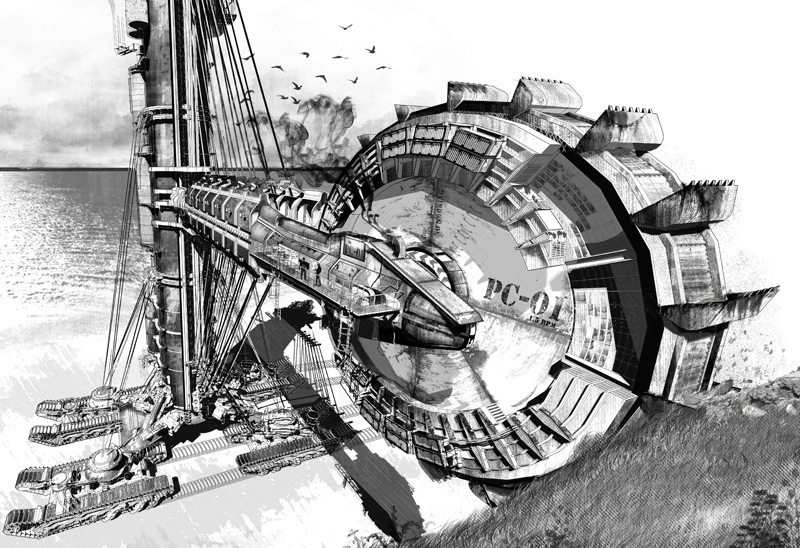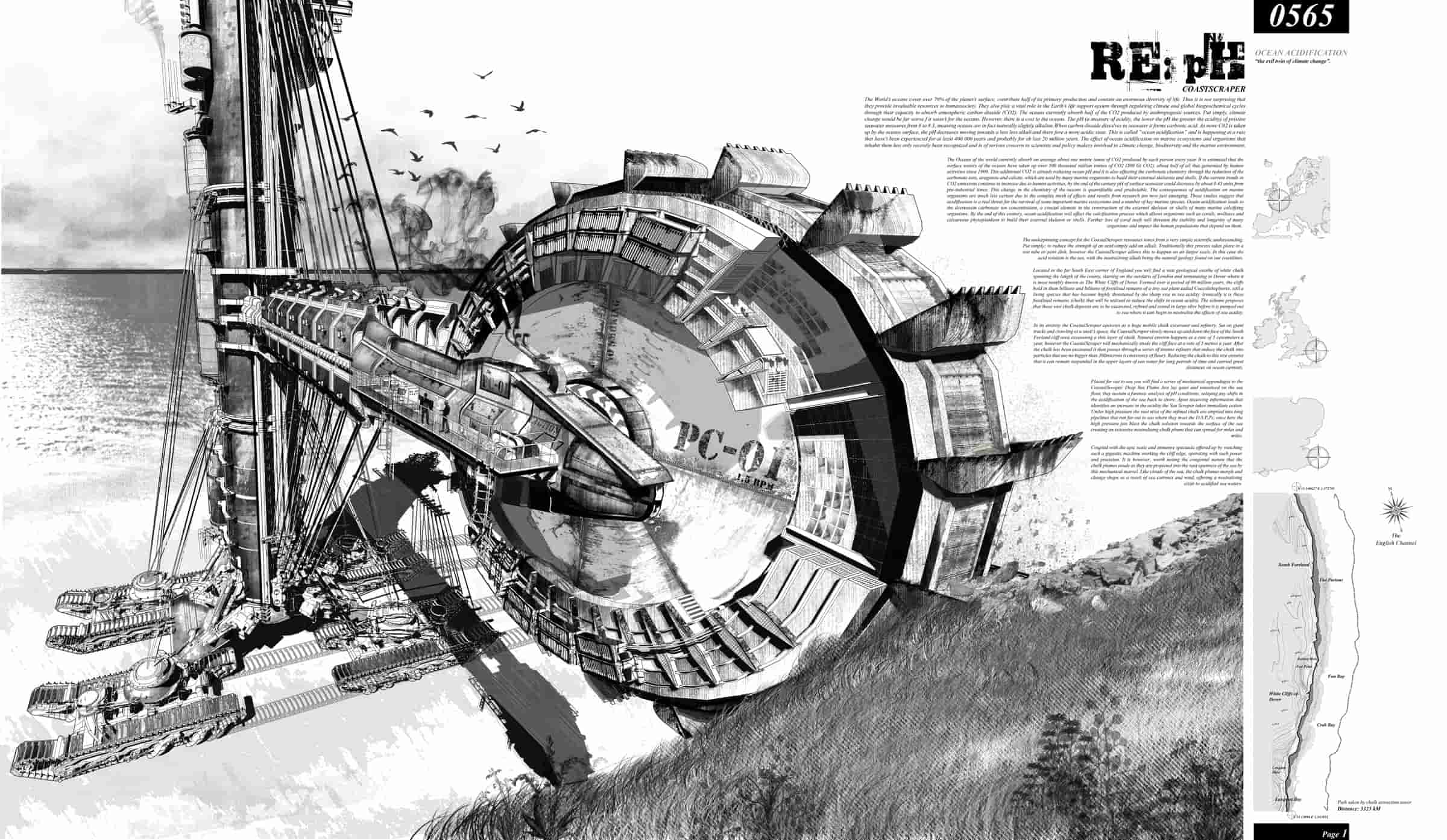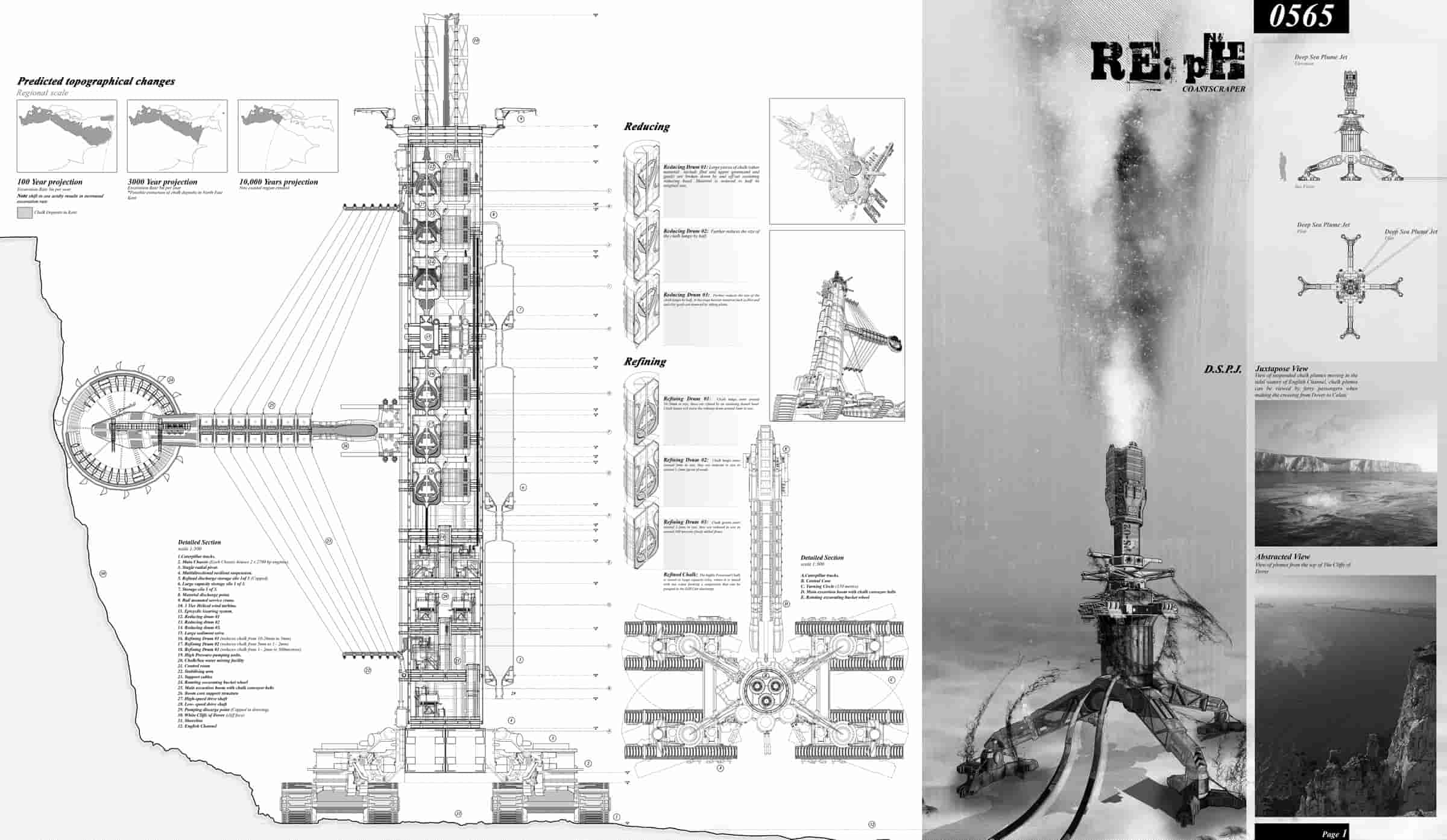Honorable Mention
2011 Skyscraper Competition
Gary Kellett
United Kingdom

The World’s oceans cover over 70% of the planet’s surface, contribute to half of its primary production and contain an enormous diversity of life. They also play a vital role in the Earth’s life support system through regulating climate and global biogeochemical cycles through their capacity to absorb atmospheric carbon dioxide.
The pH (a measure of acidity; the lower the pH, the greater the acidity) of pristine seawater measures from 8 to 8.3, meaning oceans are naturally alkaline. When carbon dioxide dissolves in seawater it forms carbonic acid. As more C02 is taken up by the oceans’ surface, the pH decreases towards a less alkali and therefore a more acidic state. This is called “ocean acidification” and is happening at a rate that hasn’t been experienced for at least 400,000 years. The effect of ocean acidification on marine ecosystems and organisms that inhabit them has only recently been recognized and is of serious concern to scientists and policy makers involved in climate change, biodiversity, and the marine environment.
The underpinning concept for the Coastalscraper is to reduce the acid levels of the oceans by adding fossilized Coccolithophores to the water. The perfect location for the project is the south east corner of England, with a vast geological swathe of Coccolithophore (white chalk) spanning from the outskirts of London, and terminating in what is known as The White Cliffs of Dover. The scheme proposes that these vast chalk deposits are to be excavated, refined and stored in large silos before being pumped out to sea where it can begin to neutralize the effects of sea acidity.
In its entirety the Coastalscraper operates as a huge mobile chalk excavator and refinery. Sitting on giant tracks and crawling at a snail’s space, the Coastalscraper slowly moves up and down the face of the South Forland cliff area excavating a thin layer of chalk – after it has been excavated it then passes through a series of intense refiners that reduce the chalk into particles that are no bigger than 500microns (consistency of flour). Reducing the chalk to this size ensures that it can remain suspended in the upper layers of sea water for long periods of time and carried great distances on ocean currents.
Placed far out to sea you will find a series of mechanical appendages to the Coastalscraper. Deep Sea Plume Jets lay quiet and unnoticed on the sea floor; they sustain a forensic analysis of pH conditions, relaying any shifts in the acidification of the sea back to shore. Upon receiving information that identifies an increase in the acidity the Coastalscraper takes immediate action. Under high pressure the vast silos of the refined chalk are emptied into long pipelines that run far out to sea where high pressure jets blast the chalk solution towards the surface of the sea creating an extensive neutralizing chalk plume that can spread for miles.


This work is licensed under a Creative Commons License permitting non-commercial sharing with attribution. https://creativecommons.org/licenses/by-nc-nd/4.0/



